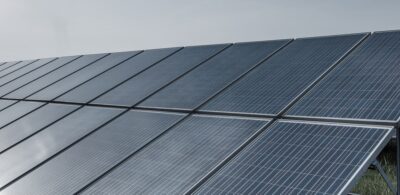Playing catch up on Energy Security
20 July 2017
Energy security may be garnering headlines right now.
But there is a more pressing concern for energy policy makers in Australia – striking a balance between a sustainable energy mix and long-term economic development.
When it comes to delivering secure, affordable and sustainable energy, Australia was recently ranked by the World Economic Forum as 53rd (out of 126 countries).[1] Although Australia rose 8 places since the Forum’s 2009 benchmark, its overall score was penalised given its CO2 emissions from electricity production are among the highest in the world.[2] Repealing the carbon tax in 2014 also meant we became the first developed nation to repeal any such carbon laws.
There is – both in Australia and internationally – increasing demand for energy. The EIA Report projects that world net electricity will increase by 69% from 21.6 trillion kWh in 2012 to 25.8 trillion kWh in 2020 and to 365.5 trillion kWh in 2040.[3] How do you meet this demand while reducing global carbon emissions? Global investments in renewables totalled $241.6 billion (excluding large hydro) last year. These investments added 138.5 gigawatts to global power capacity in 2016.[4] Investment in renewables was roughly double that in fossil fuel generation.
The new capacity from renewables was equivalent to 55 percent of all new power – the highest to date. And this is having an impact on emission. In terms of electricity, the proportion coming from renewables (excluding large hydro) rose from 10.3 per cent to 11.3 per cent. This prevented the emission of an estimated 1.7 gigatonnes of carbon dioxide.[5]
The frontlines for dealing with additional emission reductions lie in the power sector. There are a range of levers at its disposal. These range from accelerated deployment of renewables and carbon capture and storage, through to nuclear power (in countries where this may be politically acceptable). Then there’s greater efficiencies across all end-users including increased use of electric vehicles, autonomous vehicles, smart meters and battery storage and grid embedded generators. Large corporations are also committing to using 100 per cent renewable electricity via a mixture of onsite solar and wind, purchasing renewable energy certificates and power purchase agreements.[6]
The role of coal as the dominant source of electricity is declining as renewable energy gains momentum. In Australia, the number of accredited large-scale renewables power stations more than doubled in 2016, with solar farms accounting for 86 of the 98 new power stations. Schemes such as The Australian Renewable Energy Agency (ARENA) are providing grant funding to build new, large-scale solar projects. Various State governments have also promoted the use of renewable energy sources such as the Queensland Solar 160 program and the Gorgon Carbon Dioxide Injection Project is likely to begin operations in 2017.
Any transition to a new energy mix requires serious thought and planning. We need a balanced approach leading to a planned transition by the different industry sectors. The Finkel Report is a pragmatic approach. It found energy security and reliability have been compromised by less than optimal integration of variable renewable electricity generators (including wind and solar) and unplanned withdrawal of older coal and gas fired generators.
The report sets out four key outcomes for the National Electricity Market: increased security, future reliability, rewarding consumers, and lower emissions. These outcomes will be underpinned by the three pillars of an orderly transition, better system planning and stronger governance.
As with any policy, the way forward is fraught with conflicting socio-economic and political juxtaposition by major global players. The United States is pulling out of the COP21 Agreement. Countries such as China, India and the EU countries are stepping in to take leadership roles in the renewables sector. There have been global geopolitical shifts in events such as the Qatar crisis. In Australia, there is debate to extend the Renewable Energy Target, the lessons learnt from the recent power disruption in South Australia, the Basslink cable failures, high gas prices caused by the Eastern Seaboard gas shortages and tensions around the use of clean coal technology.
Against this messy backdrop, what is clear – and what we should focus on – is the need for strong government policy, planning and, where necessary, intervention to manage the balance between energy security and long-term economic development.
[1] World Economic Forum Global Energy Architecture Performance Index 2016 (EAPI 2016).
[2] In this regard, Australia is ranked 120 out of the 126 countries ranked in the EAPI 2016.
[3]US Energy Information Administration, International Energy Outlook 2016 – With Projections to 2040, May 2016.
[4] This is up 9 per cent from the 127.5 gigawatts added the year before.
[5] UN Environment, Frankfurt School-UNEP Collaborating Centre and Bloomberg New Energy Finance, 1http://fs-unep-centre.org/publications/global-trends-renewable-energy-investment-2017; REN21 (Renewable Energy Policy Network for the 21st Century, Renewables 2017 Global Status Report.
[6]International Energy Agency, World Outlook 2016; Bloomberg New Energy Finance, Research Note, Seba. T, Clean Disruption of Energy and Transportation, 2014.
Authors
Associate
Tags
This publication is introductory in nature. Its content is current at the date of publication. It does not constitute legal advice and should not be relied upon as such. You should always obtain legal advice based on your specific circumstances before taking any action relating to matters covered by this publication. Some information may have been obtained from external sources, and we cannot guarantee the accuracy or currency of any such information.

